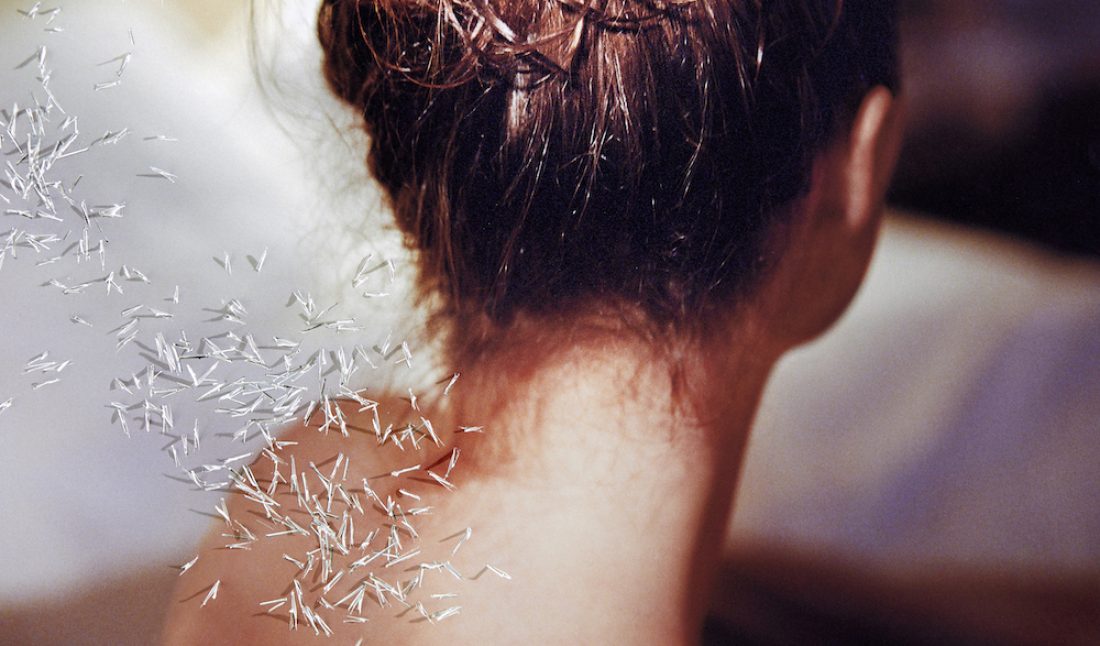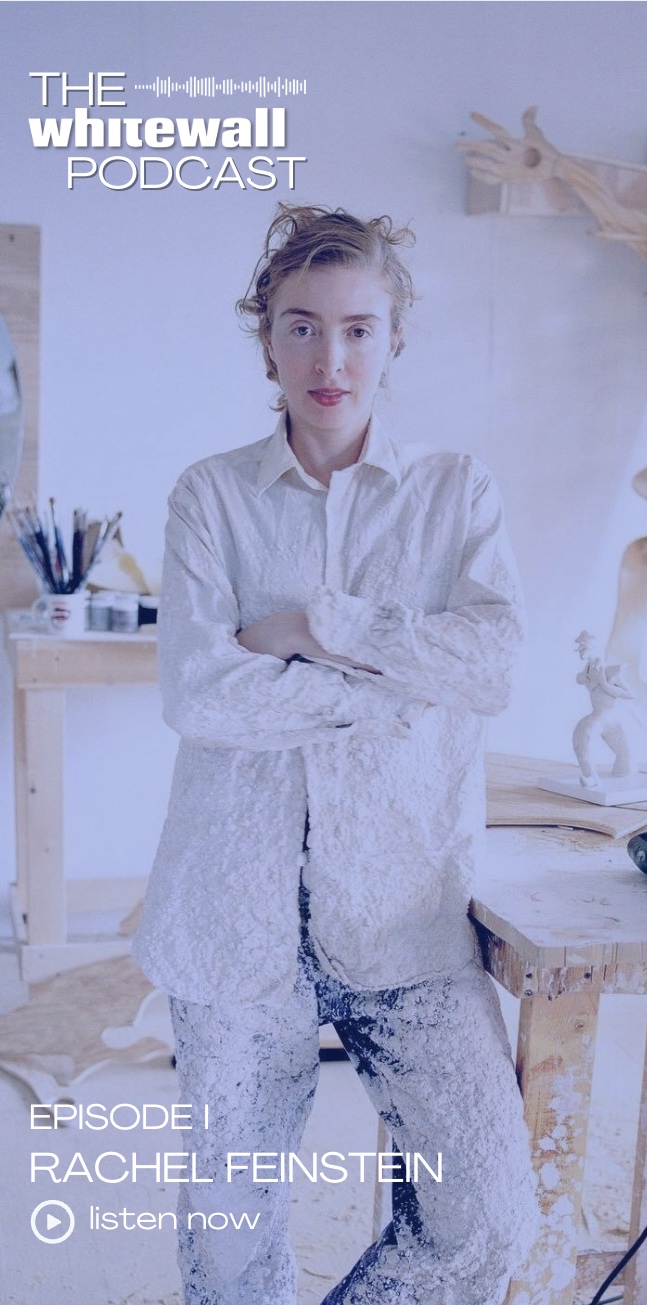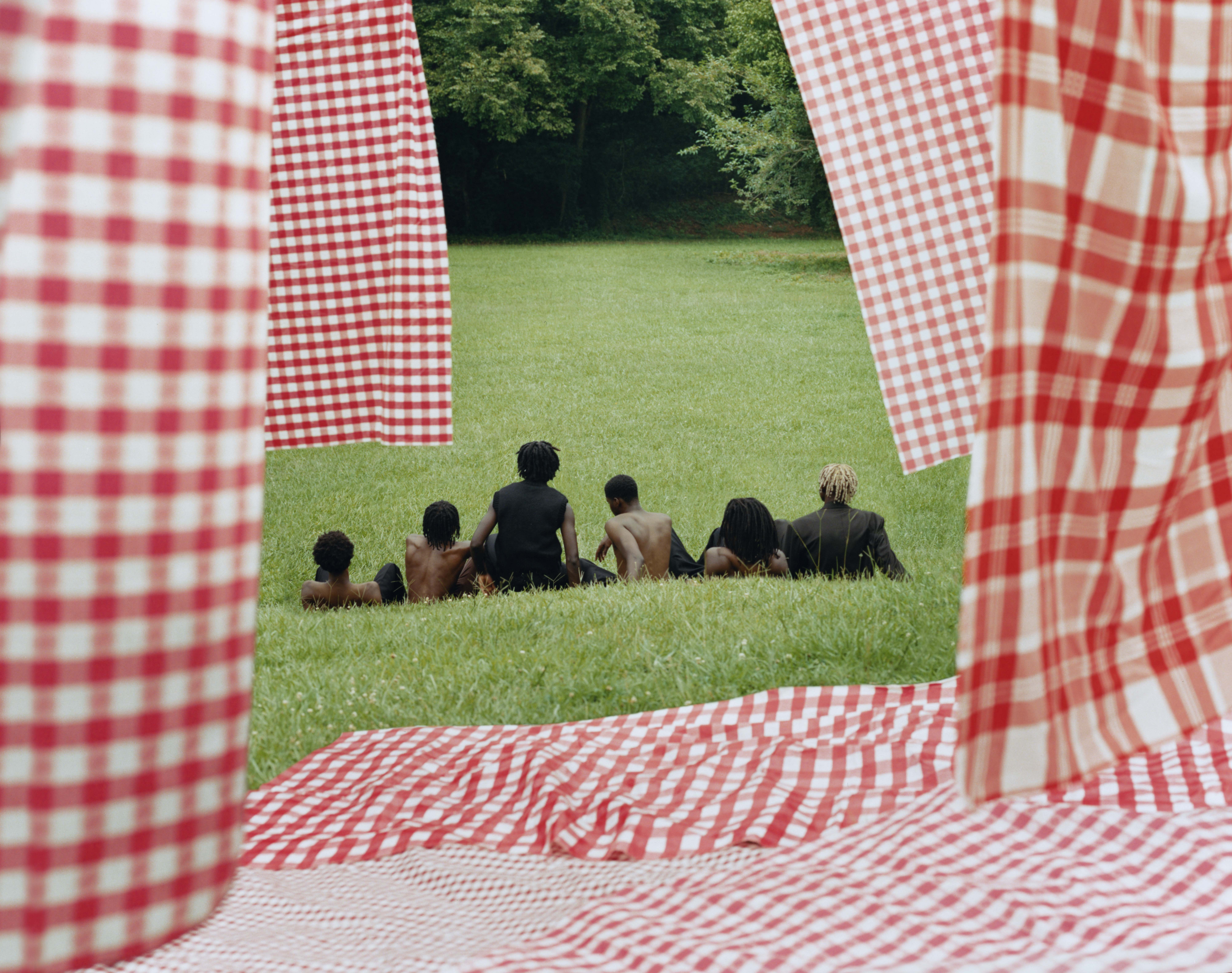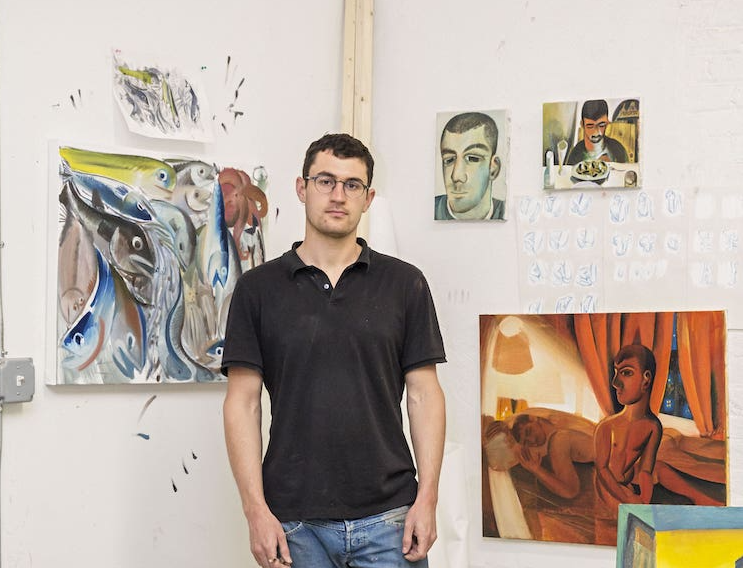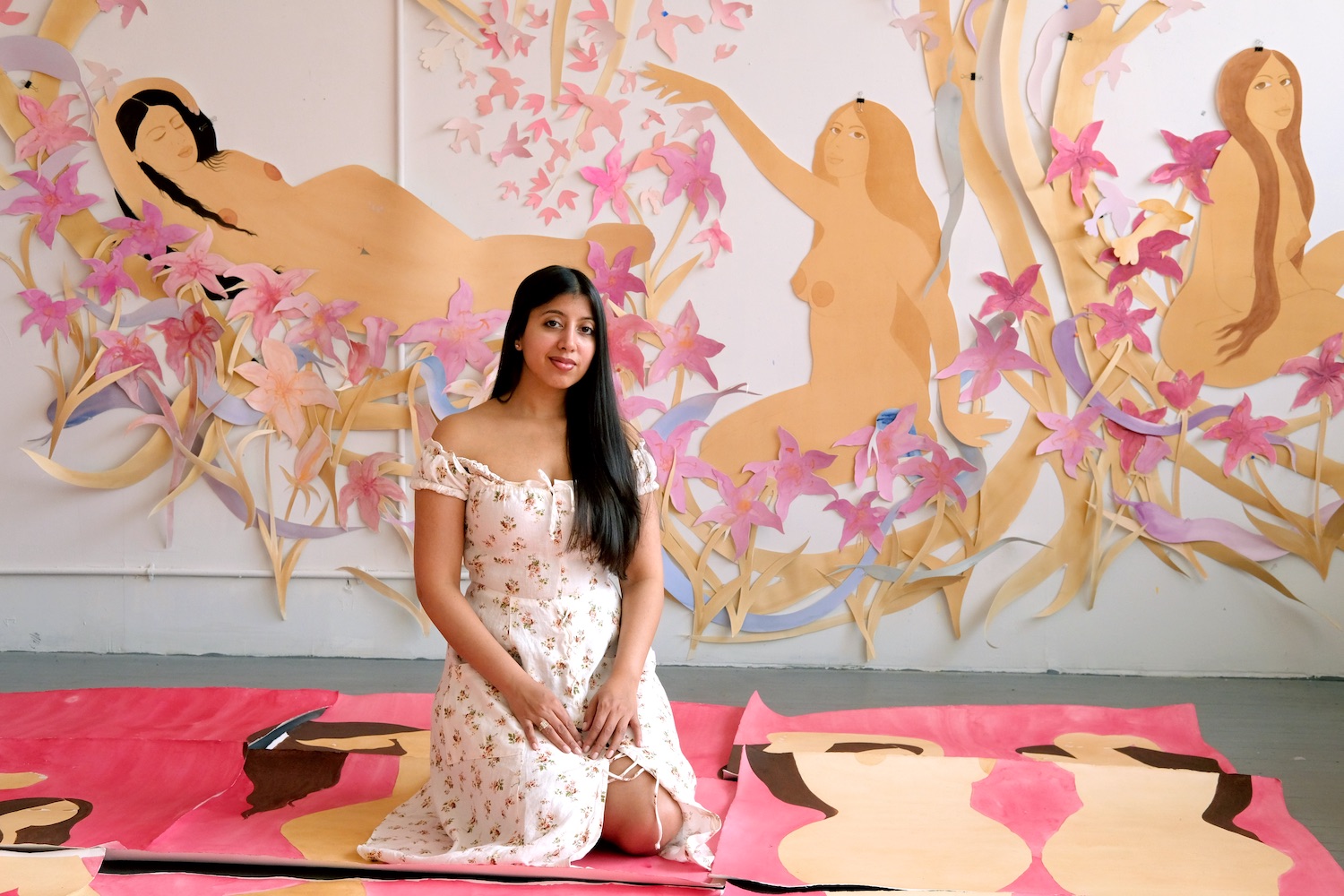Tabitha Soren’s “Relief” recently opened at Laney Contemporary in Savannah, GA. On view through March 25, the exhibition brings together several bodies of work by the San Francisco-based artist.
In the titular series, Soren transforms original photographs into 3D objects that beg us to get closer. Starting with a more formal portrait or landscape, she has carved, banged, burnt, painted, and even shot the surface of the image, to create forms that cast shadows, give texture, or bring in movement. She complicates the image with added layers, playing with light and perception. The soft nape of a neck, with hair tied up, is met with a swarm of protrusions that stick out this way and that from its surface. A rocky desert landscape is obscured by a swirling cloud of thick smoke. Hands in near prayer are encircled with dents and dots that hint at both something spectral and aggressively made. With these, Soren wants to show the viewer the experience of their making, distressing the photo and our own reading of it.
If you’re like me, you spent your formative years watching Soren on MTV News covering everything from pop culture to the politics of the day, getting up close and personal with everyone from Mariah Carey to Tupac, and Yasser Arafat to Bill Clinton. On camera, she was brilliant, funny, engaging, and utterly watchable. Soren started her career in broadcast journalism, studying at New York University and interning at CNN. After her (it needs to be said) iconic years at MTV, ABC, and NBC, she chose to study documentary filmmaking in grad school at Stanford University. The more she saw how documentaries were made beyond the storytelling—the fundraising, the festival screenings, the relatively minuscule audience you’d ultimately reach after years of toiling away on a project—the more she realized that it was the image-making itself that interested her. So she switched gears and chose to focus her eye on photography.
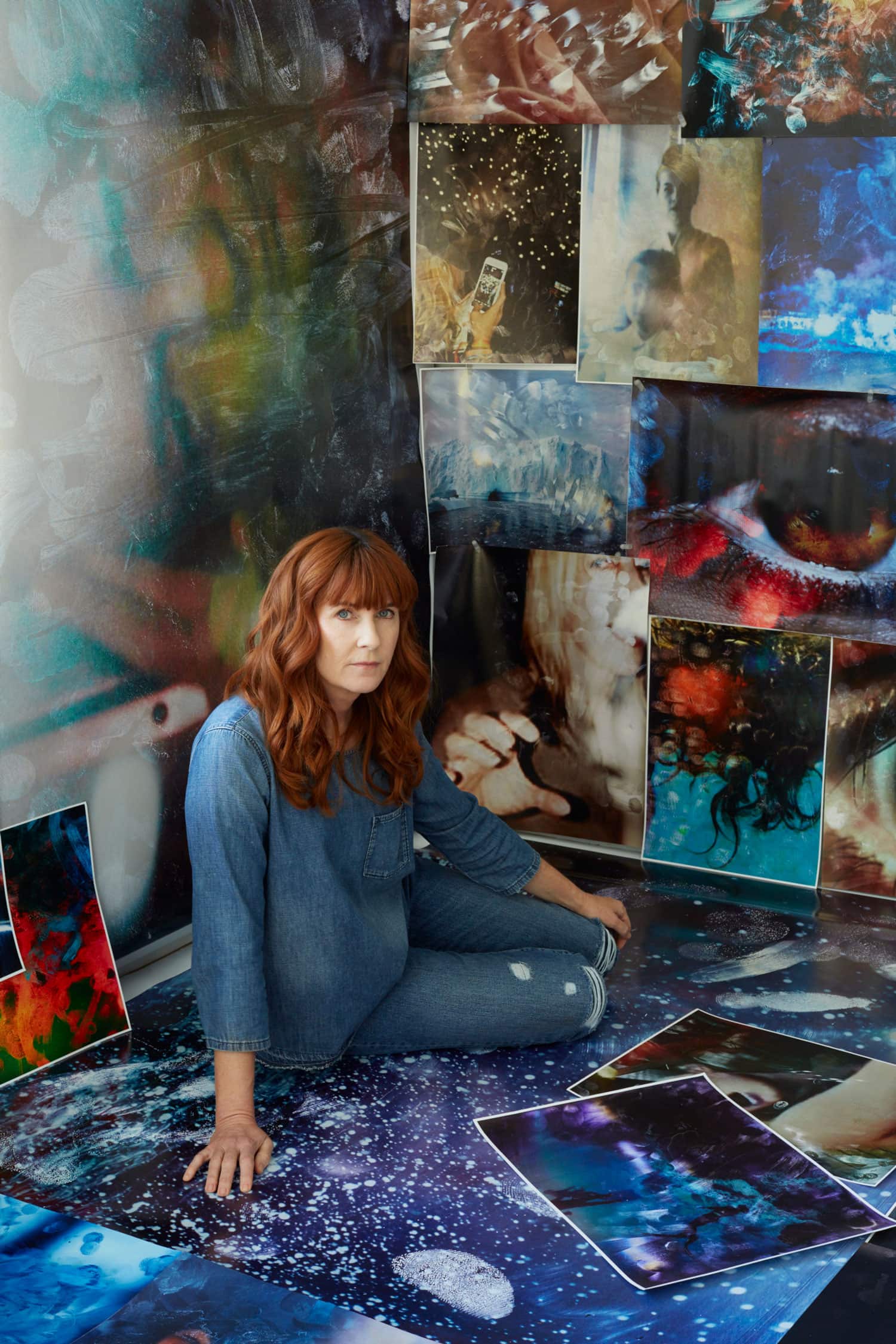 The artist in her studio, © Tabitha Soren.
The artist in her studio, © Tabitha Soren.
Her studio practice has resulted in powerful pictures, like the series “Motherload” where the early agony of newborn days and nights are layered one atop the next. Soren set up multiple exposures from a bird’s eye view of her own bed after each of her children was born. The traces of night feedings, morning exhaustion, and the chaos of toddlers and babies all clamoring for mom come through in dizzying, intimate depictions that reveal the post-partum experience in all its messy, bleary-eyed, fully-depleted haze.
Then there is “Running,” in which Soren photographed figures racing across a landscape at golden hour. Away from what? We’re not sure. But that panic, that energy, that need to escape—and fast—is palpable. For “Surface Tension,” she created large-scale images, their base mined from the internet and social media and covered by traces of swipes, taps, and fingerprints, just like the screens of our precious, over-touched tablets and phones through which—especially in the past couple years—we’ve seen so many images of what’s happening in the world.
To learn more about her creative process, Whitewall spoke with Soren, who in addition to her current solo exhibition at Laney Contemporary, will have work in group shows this March at Rule Gallery in Denver, CO, and April at Rivalry x Samsøñ in Buffalo, NY.
WHITEWALL: Tabitha, we are fellow NYU Journalism alums!
TABITHA SOREN: And you probably went to NYU just to be in New York just like me.
WW: Yes! What drew you to New York?
TS: It was totally essential. I wanted to be where it did not feel like other people were watching and judging. I wanted to feel like you could reinvent yourself and try on different things. There was so much media that I tried out. I tried out radio, I tried out newspapers, and I finally ended up an intern at CNN and thought working on pictures was so easy and fun! I could stay there until 3 am and not mind.
I started really early. I was at CNN at 18 or 19. I worked my way through my first career at a fairly young age.
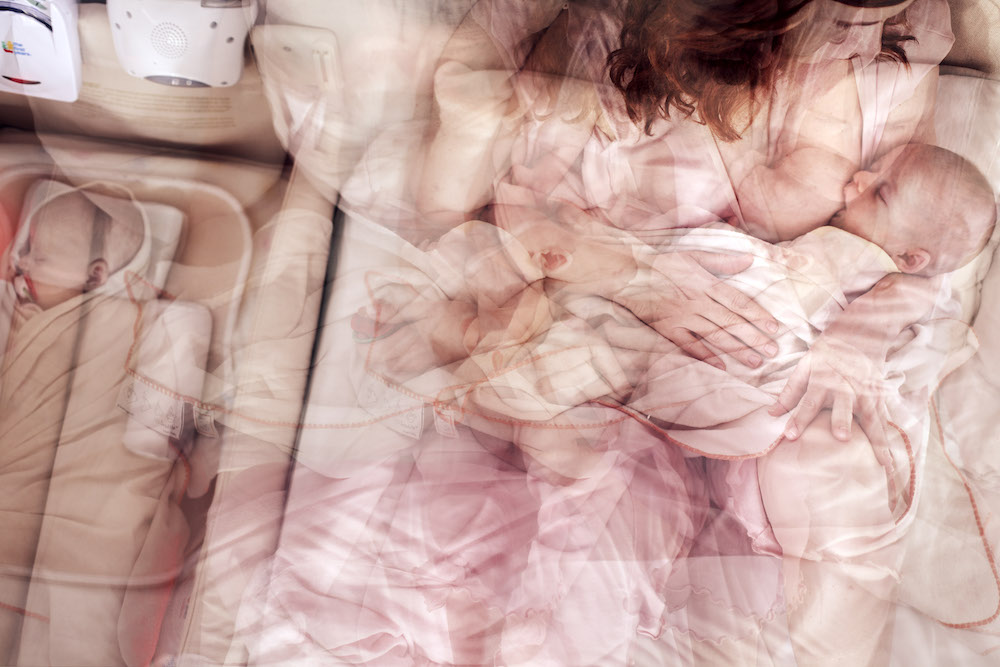 Tabitha Soren, “My Great American Novel All The Daytime Photos,” 2006-2007, 20 x 13 inches, © Tabitha Soren.
Tabitha Soren, “My Great American Novel All The Daytime Photos,” 2006-2007, 20 x 13 inches, © Tabitha Soren.
WW: Yes you did! What prompted your move away from journalism to pursue image-making at grad school?
TS: I had just gotten married and to me, getting married definitely had thoughts of starting a family associated with it. I wasn’t super conscious of it, but the idea of being on planes all the time and having my schedule attached to a breaking news schedule was not the type of parent I wanted to be.
Mainly it felt like I was just super drawn to art and art history. Alexander Nemerov, Diane Middlebrook, and people at Stanford, made me feel like I had something to say that was not just who, what, when, where, why. Which was what my journalism was really based on, this very objective truth. And the older you get, it’s very natural to start seeing a lot more grey in the world. Things become more complex, and you become a more complex person. And you start thinking about personal happiness, as well as career and ambition, and how those things come together. It’s a luxury to be able to choose something. By age 30 I had earned enough money and security that I could say, “What do I actually want to be doing?”
WW: And for you, the answer was ultimately art and specifically, photography. So, where do you typically start with a new series?
TS: Every project I do is like career suicide. I change the cameras, I change the technology, I change the materials. I’m on to something else and I feel like the idea needs to be visualized differently. They do all connect to psychological states. Every single body of work I do, it’s not conscious in the beginning, but in the end, I step back and see that I’m trying to visualize something that’s actually invisible or photograph something that one cannot see.
I want to make something I haven’t seen before. And if you are a lens-based artist, that is really difficult right now, because everyone has a fantastic camera on their phone in their pocket. Unless you’re in the middle of a revolt or a war, it’s going to be very hard to take a different picture. So, I think those are some of the things that are floating around my brain in an elliptical way that makes me want to intervene with the photograph the way that I do, either layer something on top or cut it open.
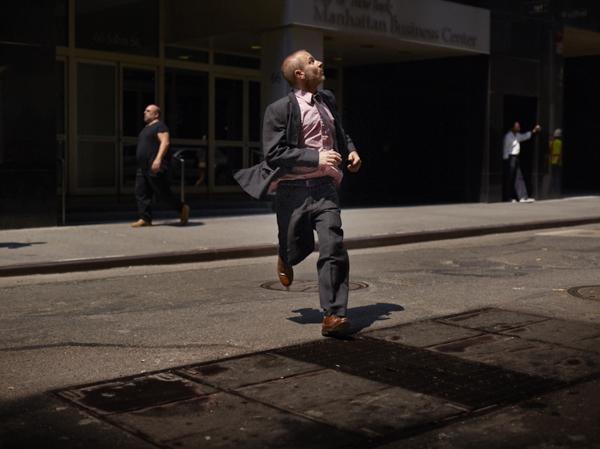 Tabtiha Soren, “Dave, 000329,” 2011, © Tabitha Soren.
Tabtiha Soren, “Dave, 000329,” 2011, © Tabitha Soren.
WW: I wanted to ask you about your “Running” series. It calls up feelings of being trapped, of trying to escape. What was the initial idea there and what were some of the challenges you met trying to capture that movement?
TS: The project started out being about the fight-or-flight response. I think a lot of working mothers can relate to that because there’s never any time when you shouldn’t be doing something. If you have any aged children at home, they are giving you emergent problems every time you take a deep breath. You’re saving them from falling down the stairs, or in a more extreme sense, helping them not have an eating disorder. It’s not a relaxing job being a mom.
This is where my journalistic background keeps finding its way into my art. I was doing some reading about the fight-or-flight response and learned that you actually lose your sense of sight for a millisecond when you’re in that space. You can’t see. It’s so short that you’re not aware that you go blind, but that set off a light bulb for me. I thought it would be interesting to generate a project about something that we all experience but we actually can’t see ourselves in the moment.
I made these tableaus where I got whoever would run for me—my nanny, my kid’s kindergarten teacher—to run. I wasn’t using models, because I didn’t want it to look like fashion. What was great about the running was that at a certain point, they forgot they were on camera because they were trying not to fall. They lost their composure and just ran. I was attracted to difficult times of the day to shoot, like sunrise or sunset, like most cinematographers or photographers. And I was teaching myself as I went.
A photographer who was a fan of the series said to me, “This is going to find its audience…this is going to last over time.” I thought that was nice of him to say, and kind of brushed it off. But the isolation and the feeling of being locked down and trying to burst out of whatever your reality was, really connected to COVID and the last couple of years. This is my first example of something changing its meaning over time.
I’m not attached to my intention that started the series. If the whole body of work stretches and transforms with the culture, what more could you ask for? If people can find different slices of resonance there, that to me is the most important thing. I don’t care if it’s my interpretation.
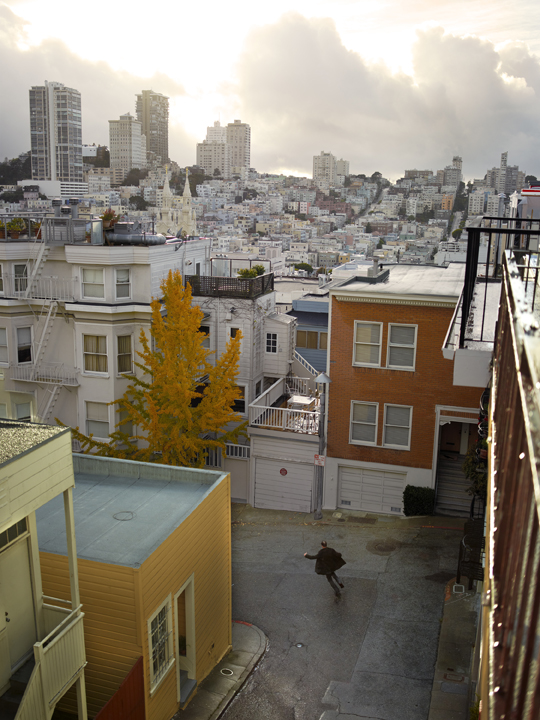 Tabitha Soren, “Nicholas, 001201,” 2012, © Tabitha Soren.
Tabitha Soren, “Nicholas, 001201,” 2012, © Tabitha Soren.
WW: That makes it a successful piece of art! Has the meaning changed for you at all, looking back at these works years later?
TS: When I look at the “Running” work now, I think of the military and my background. So much of my growing up was on military bases, living in Germany, and having helicopters land on our front lawn. My alarm clock in high school was planes landing on the runway across the street. It wasn’t horrible, but when I think about it now, it was kind of a daily assault. Daily life was actually hinged on threat. Everybody around me was trying to be on high alert in case something bad happens, like a war.
I didn’t feel like a war was about to happen at all times or anything like that, but I do think that stuff seeps in. I’m always looking over my shoulder. I’m always trying to prevent something bad from happening. And when I look at that work, I see that. I didn’t intentionally do it. But that is my fingerprint on the work as a human being. High alert. It’s a well-worn groove in my thinking pattern.
With technology and the pace of our lives, Virginia Heffernan calls it, “the joyless urgency of our time.” Even if you didn’t grow up as a military brat, I think a lot of people feel like they are hanging on the edge.
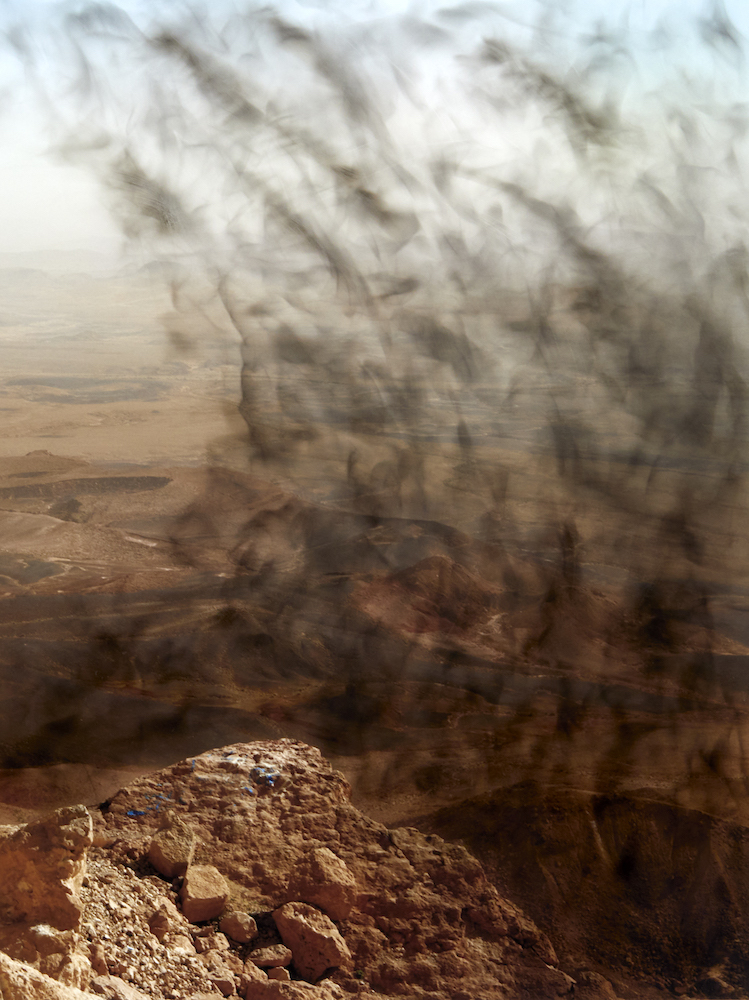 Tabitha Soren, “Rosetta Stone,” 2020, © Tabitha Soren.
Tabitha Soren, “Rosetta Stone,” 2020, © Tabitha Soren.
WW: Absolutely. Brutal. And speaking of brutal, I wanted to talk to you about your ongoing series, “Relief.” They are just so, sorry to use the word, but beautiful and almost ethereal. Yet, they are made with some pretty violent interventions—burning, hammering, chiseling, and even shooting. How did you arrive at that process?
TS: I had been making these for a long time, but I felt ambivalent about them because I hadn’t come up with a concrete thesis for them. I need to have conceptual rigor. It’s the only way to contain it for me.
So, you have a picture that I have taken where I’ve tried to keep them classic—formal portraits and landscapes, things that the viewer has seen before. And then I’m trying to upend the focal plane by printing them on really thick paper. That allows me to dent it and carve it and shoot it. And then they have these protrusions that cast a shadow on the work itself. You’ve got the background, the shadow, the intervention, the cuts, and I scan things on there, as well. There are multiple layers in one picture. I’m complicating that idea.
The viewer has to come in with their own emotional baggage and their own psychological state. Instead of asking, where is that? They are processing, a much more emotional response. And that’s what I wanted and that’s also why I don’t make them too big. They are not landscapes that you can walk into. They are intimate things where you can come up close. And being shown after a time that was really troubling for everyone, in terms of a worldwide pandemic, perhaps the quietness and the serenity in some of the pictures could provide a little relief.
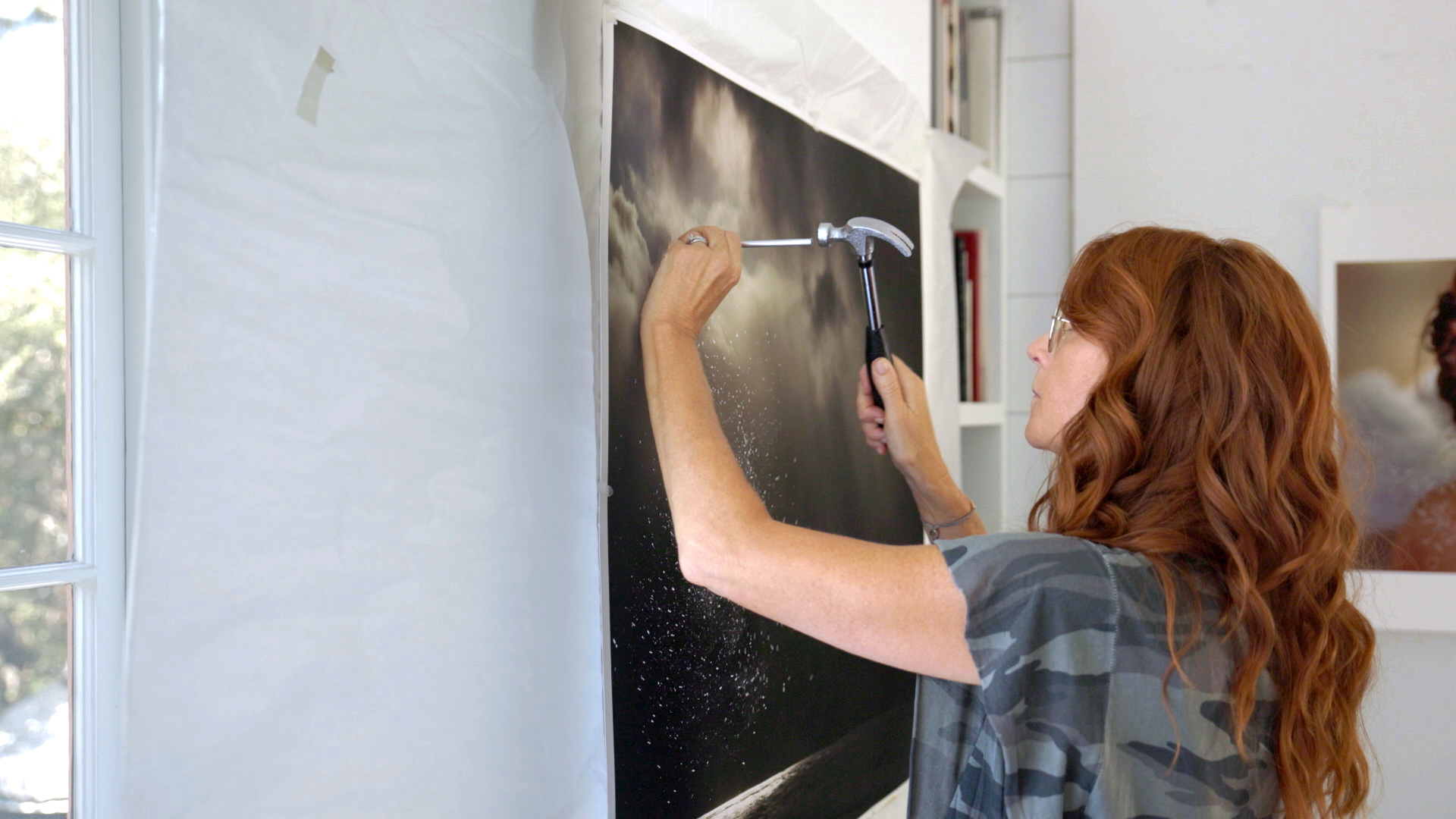 The artist in the studio, © Tabitha Soren.
The artist in the studio, © Tabitha Soren.
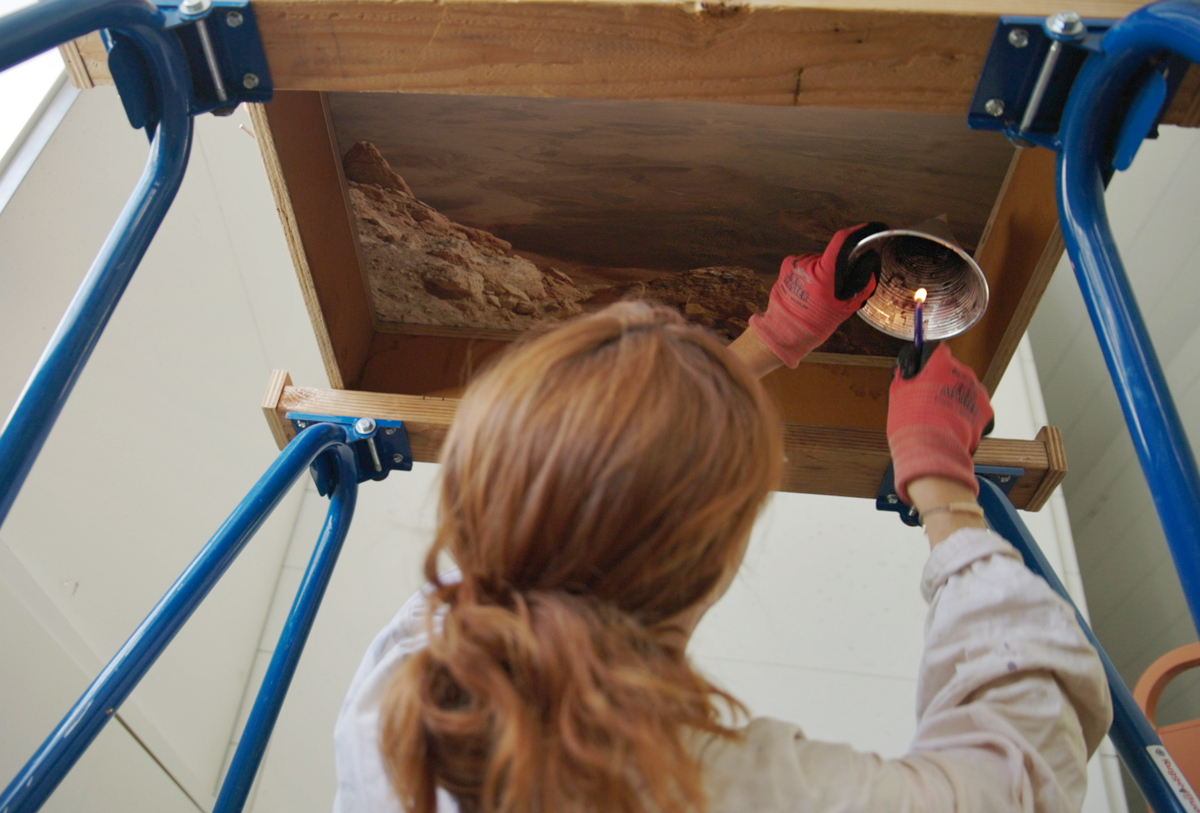 The artist in the studio, © Tabitha Soren.
The artist in the studio, © Tabitha Soren.
WW: There’s something almost specter-like in these images. Something otherworldly.
TS: I’m trying not to dispel the mystery or the magic. I love that they are handmade. No two are alike. I’m very skeptical about beauty. But if there is also terror and pounding and shooting involved, then I feel like I’ve moved into the sublime instead of mere beauty.
I think art is about paying attention. Photography is the most obvious version of that, it’s about seeing itself, you’re taking life and turning it into a photograph. And that precision of description is something very important to a lot of photographers. But I am moving away from that. I’m trying to get into a more messy, emotional, psychological place of, how do we exist as an individual? Who are we? I think with a lot of photography shows you leave them and your eyes are more wide open. With mine, I would love for people to leave with their hearts more open.
WW: And what’s wrong with being a little tender?
TS: That’s all I got right now.
WW: It’s all I want!
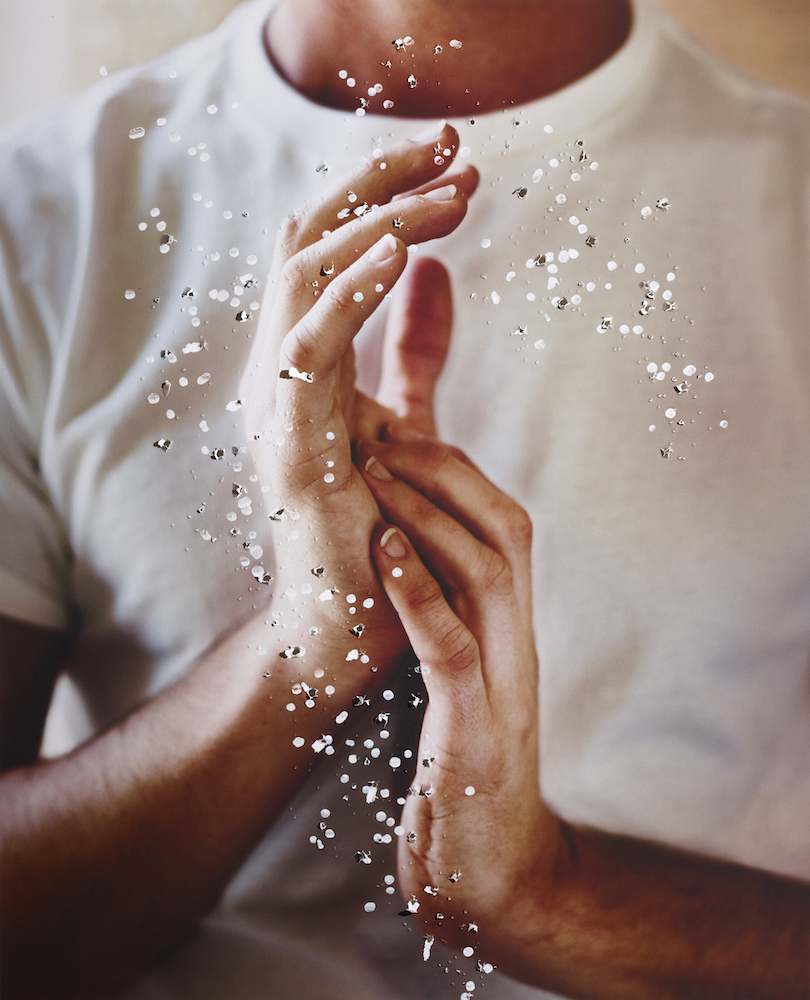 Tabitha Soren, “The Puritan,” 2019, © Tabitha Soren.
Tabitha Soren, “The Puritan,” 2019, © Tabitha Soren.







